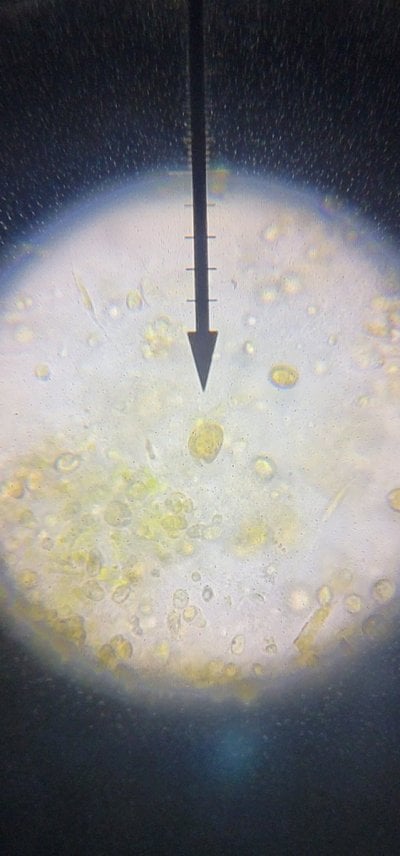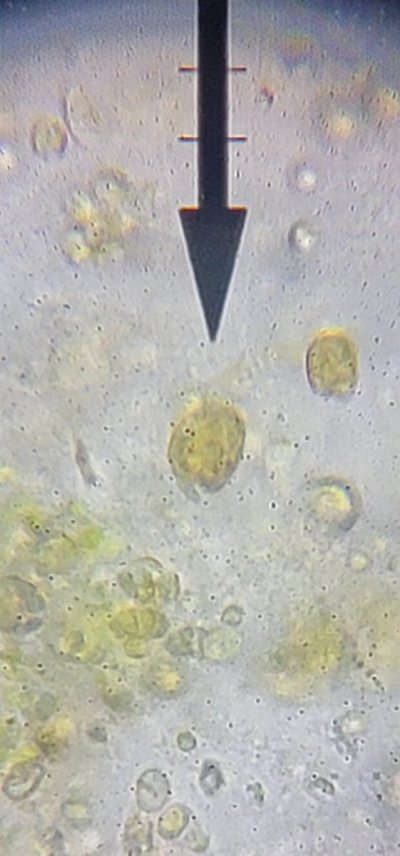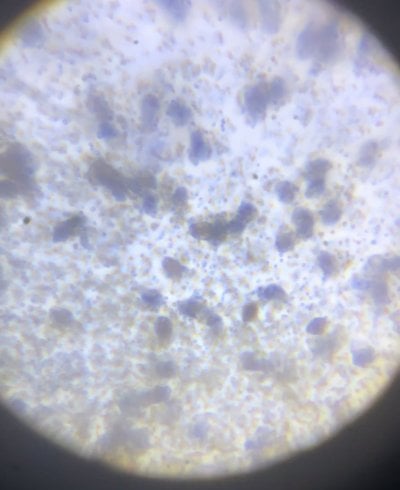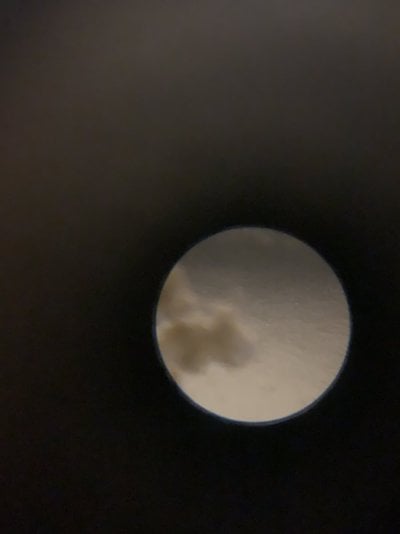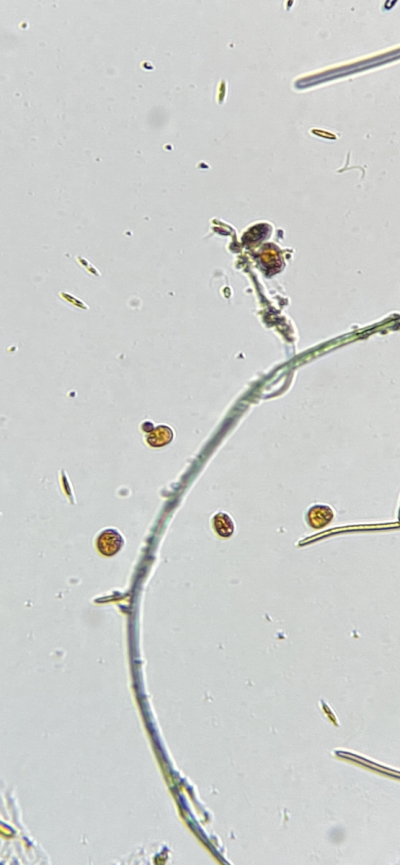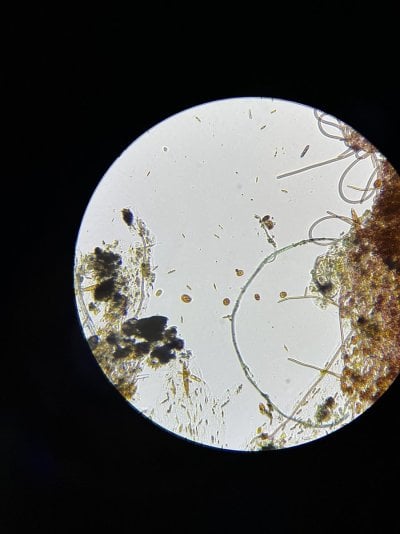What exactly does that mean ? ... doesn't sound goodI think it looks more like prorocentrum than large cell amphidinium to me.
Navigation
Install the app
How to install the app on iOS
Follow along with the video below to see how to install our site as a web app on your home screen.
Note: This feature may not be available in some browsers.
More options
You are using an out of date browser. It may not display this or other websites correctly.
You should upgrade or use an alternative browser.
You should upgrade or use an alternative browser.
Dinoflagellate Identification Guide
- Thread starter taricha
- Start date
- Tagged users None
- Joined
- May 22, 2016
- Messages
- 6,970
- Reaction score
- 10,747
It means that you have one of the more annoying kinds.What exactly does that mean ? ... doesn't sound good
It's a little less toxic than ostreopsis, but it also is harder to kill with UV.
In the dino threads, you may find observations from other people who also have had prorocentrum to be informative.
Doubt you'll see this. I'm thinking I have prorocentrum.I've had this laying around for a while. Had some recent interest, so I tweaked it a bit and am posting it.
Not really about cures just ID pictures, videos, and a few short facts.
Hope it can be helpful.
Here's photos and videos. It doesn't move, has a bubble (pyrenoid) in the center and when it does move, it moves like a roomba. Plenty of mucus and colonizes on both rock and sand.
I currently run carbon right now. I plan to continue to run carbon while I have this issue. I also don't have any corals. Just fish.. I've also been feeding a lot more often. Now is the UV sterilizer the way to go? I know they release toxins and I really don't want to kill my fish. Would adding dechlorinator help? I plan to do a 3-day blackout while running a UV sterilizer and also increasing my nitrates and phosphates
The only reason why I'm skeptical at this point is because I do have different sized cells and for the type that I think I have it doesn't mention that there could be two size cells. You'll see in the video I hope
Attachments
- Joined
- May 22, 2016
- Messages
- 6,970
- Reaction score
- 10,747
Those are amphidinium, probably small cell.
Toxins involved are mostly just a concern to clean up crew that would eat many cells. Not really going to hurt fish just by killing cells in the water.
Run GAC as a good idea anyway.
Toxins involved are mostly just a concern to clean up crew that would eat many cells. Not really going to hurt fish just by killing cells in the water.
Run GAC as a good idea anyway.
But it's on my rocks, overflow, and glass. I thought it doesn't do thatThose are amphidinium, probably small cell.
Toxins involved are mostly just a concern to clean up crew that would eat many cells. Not really going to hurt fish just by killing cells in the water.
Run GAC as a good idea anyway.
- Joined
- May 22, 2016
- Messages
- 6,970
- Reaction score
- 10,747
Look further down in the document, for small cell amphidinium. There's pictures of it on the rocks, and it's listed as being able to occupy all those surfaces.But it's on my rocks, overflow, and glass. I thought it doesn't do that
Oh. So basically uv sterilizer won't work. Black out won't work. What will work? Manually scrubbing the rocks? Besides adding more biodiversity, what do I do to get rid of them?Look further down in the document, for small cell amphidinium. There's pictures of it on the rocks, and it's listed as being able to occupy all those surfaces.
- Joined
- Apr 3, 2019
- Messages
- 437
- Reaction score
- 271
Any ID on these guys. They are on my sandbed glass and rocks. Been fighting them for a year and a half. I’m thinking maybe procentrum? It won’t let me upload a video but I see some stationary and others spinning in a circle. I know it’s hard to tell without video and it was a cheap microscope but Picture below. Treatment options ?
Attachments
- Joined
- May 22, 2016
- Messages
- 6,970
- Reaction score
- 10,747
looks like maybe chrysophytes (tiny suspended motionless golden spherical cells) and then some dino larger cells. I can't make out any detail to distinguish further.Any ID on these guys. They are on my sandbed glass and rocks. Been fighting them for a year and a half. I’m thinking maybe procentrum? It won’t let me upload a video but I see some stationary and others spinning in a circle. I know it’s hard to tell without video and it was a cheap microscope but Picture below. Treatment options ?
- Joined
- Apr 3, 2019
- Messages
- 437
- Reaction score
- 271
how do you fight the chrysophytes?looks like maybe chrysophytes (tiny suspended motionless golden spherical cells) and then some dino larger cells. I can't make out any detail to distinguish further.
I started a thread on these ages ago. Here is a link to the post after I finished them off.how do you fight the chrysophytes?

Symbiodinium. Got any treatment ideas?
I have what definetly appears to be chrysophytes. At "1200x" on my toy microscope still very hard to see. I did not observe it move, I haven't used a microscope since Micro in college so not sure I did things correctly but I scraped some off a dead coral skeleton and placed a little plastic...
 www.reef2reef.com
www.reef2reef.com
ID pleaseI've had this laying around for a while. Had some recent interest, so I tweaked it a bit and am posting it.
Not really about cures just ID pictures, videos, and a few short facts.
Hope it can be helpful.
4th pic if you click to zoom in looks most clear resolution I think.
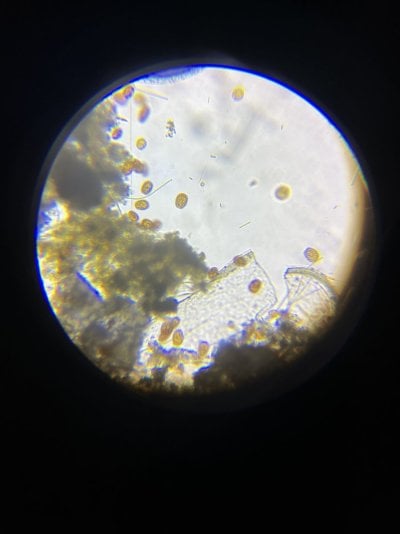
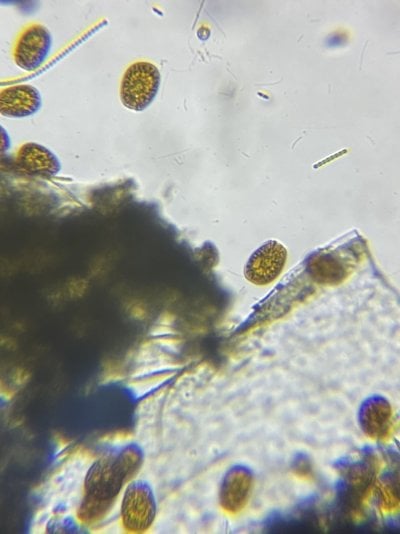
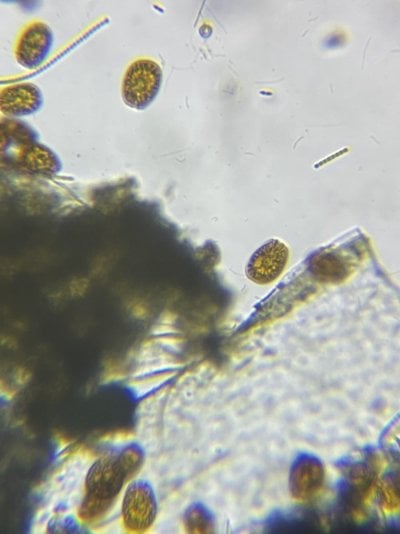
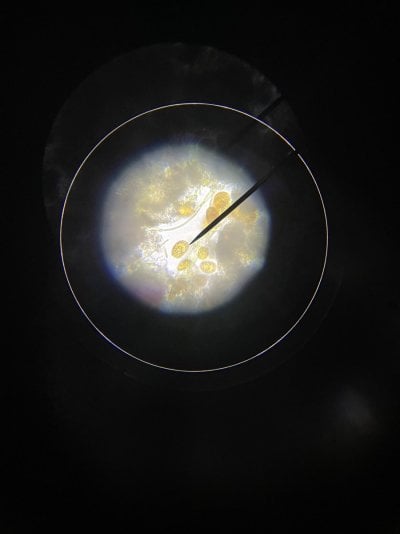
- Joined
- May 22, 2016
- Messages
- 6,970
- Reaction score
- 10,747
Large cell amphidinium.D pleaseLooks like Prorocentrum from @taricha PDF ?
@taricha was hoping for some help. I think I am dealing with possibly ostreopsis Dinos. Here is what I got.
a photo from said junk microscope . Waiting on a better but was hoping I could get some ideas. And also this short video showing the dinos in question.

 youtube.com
youtube.com
a photo from said junk microscope . Waiting on a better but was hoping I could get some ideas. And also this short video showing the dinos in question.

Ostreopsis?
Attachments
One of the microscope pics is large cell amphidinium. However the video shows large mucus nets, so I am going to guess you have a combination.@taricha was hoping for some help. I think I am dealing with possibly ostreopsis Dinos. Here is what I got.
a photo from said junk microscope . Waiting on a better but was hoping I could get some ideas. And also this short video showing the dinos in question.

Ostreopsis?
youtube.com
@taricha and I collaborated on this article; might help you with some treatment ideas.
A Dinoflagellate Treatment Guide
As the title suggests, this is intended as a short guide on what to do when you suspect dinoflagellates are trying to overtake your system. It is an attempt to boil down the protocols discussed across 11,000 posts in this "Are you Tired" thread...
 www.reef2reef.com
www.reef2reef.com
Awesome, thanks! I thought I might have a few types as some goes away at night and some long strings stay.One of the microscope pics is large cell amphidinium. However the video shows large mucus nets, so I am going to guess you have a combination.
@taricha and I collaborated on this article; might help you with some treatment ideas.

A Dinoflagellate Treatment Guide
As the title suggests, this is intended as a short guide on what to do when you suspect dinoflagellates are trying to overtake your system. It is an attempt to boil down the protocols discussed across 11,000 posts in this "Are you Tired" thread...www.reef2reef.com
From the research I’ve been doing and your articles, I and raising nutrients to 10/.1, adding microbacter 7, and today got my hands on sponge excel and will start to create a diatom bloom.
Yeah the nets made me think ostreopsis. A properly sized and placed UV usually makes quick work for ostreos. If you have some of the other swimmers like proro, you might consider a blackout to encourage them to swim.Awesome, thanks! I thought I might have a few types as some goes away at night and some long strings stay.
From the research I’ve been doing and your articles, I and raising nutrients to 10/.1, adding microbacter 7, and today got my hands on sponge excel and will start to create a diatom bloom.
Like so many others, I have fallen into the many rounds of bottoming out followed by chemiclean and so on. Currently have a horrible outbreak of cyano that is proving very difficult to get rid of, in addition to the Dino’s.
Hoping to get an ID on my Dino’s, and any advice on how to attack the cyano at the same time. When manually removing the cyano are you filtering the water and returning it to the tank? Otherwise how are you keep from Bottoming out again. How eles can I battle it as I am losing corals and it just won’t go away.
Thanks for the help this has been a never ending battle and my wife is about ready to kill me for the amount of time I have been spending on the tank.
Hoping to get an ID on my Dino’s, and any advice on how to attack the cyano at the same time. When manually removing the cyano are you filtering the water and returning it to the tank? Otherwise how are you keep from Bottoming out again. How eles can I battle it as I am losing corals and it just won’t go away.
Thanks for the help this has been a never ending battle and my wife is about ready to kill me for the amount of time I have been spending on the tank.
Attachments
Struggling to ID here.. never had a Dino battle I don’t think. As far as I can tell they are only on my sandbed (bubbles on rocks are from other algae I think.. Tank is a fluval 13.5 nano. Tank is 4 months old.
I have never had parameters bottom out. I typically maintain .03-.07 PO4 and NO3 stays around 4-8ppm.
I thought they were diatoms but at night the sandbed typically looks cleaner from what I can tell. It is a brown algae or is it Dino’s of some type.
Here are some pics. Cheap microscope and the pics were taken at 100x.








I have never had parameters bottom out. I typically maintain .03-.07 PO4 and NO3 stays around 4-8ppm.
I thought they were diatoms but at night the sandbed typically looks cleaner from what I can tell. It is a brown algae or is it Dino’s of some type.
Here are some pics. Cheap microscope and the pics were taken at 100x.
Hard to ID at 100X. I typically ask for 400X. That said, were they SWIMMING at all? Describe the movement pattern if they were swimming. Almost all of the dinos swim while diatoms chrysophytes do not.Struggling to ID here.. never had a Dino battle I don’t think. As far as I can tell they are only on my sandbed (bubbles on rocks are from other algae I think.. Tank is a fluval 13.5 nano. Tank is 4 months old.
I have never had parameters bottom out. I typically maintain .03-.07 PO4 and NO3 stays around 4-8ppm.
I thought they were diatoms but at night the sandbed typically looks cleaner from what I can tell. It is a brown algae or is it Dino’s of some type.
Here are some pics. Cheap microscope and the pics were taken at 100x.








Similar threads
- Replies
- 3
- Views
- 158
- Replies
- 3
- Views
- 217
- Replies
- 22
- Views
- 479
- Replies
- 34
- Views
- 2,050




